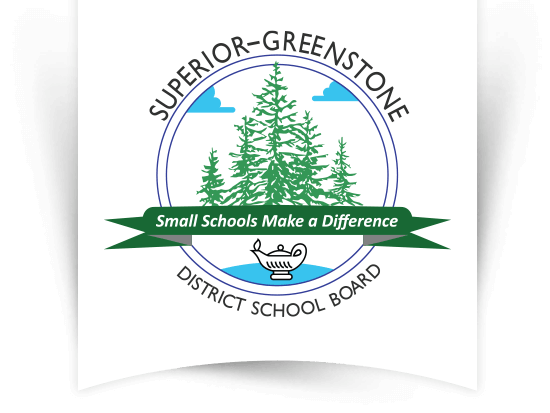March 22, 2012
At its Regular Board Meeting on March 19, 2012, the Superior-Greenstone District School Board carried a motion to proceed with a study of a Grade 7-12 class configuration in both the Nipigon Red Rock District High School and Lake Superior High School. Trustees also approved the creation of a Grade 7-12 Advisory Committee for each of the areas involved in the study.
“Declining enrolment in many of our schools has resulted in very small class sizes and multiple grade groupings in the intermediate division,” said Board Chair, Pinky McRae. With the teacher/pupil ratio in these classrooms extremely low, McRae says, “The long term sustainability of maintaining the current level of staffing in some intermediate classrooms is no longer feasible under the current economic conditions.” She suggests that, the 7-12 Model presents an innovative solution to a feasibility problem where grade 7 and 8 students stand to benefit the most.
The number of secondary schools in Ontario that serve grade 7 and 8 students in the same facility has grown in recent years, especially since the Ontario Academic Credit (grade 13) was eliminated. “Across the province, there are school boards that are making better use of existing facilities and staffing at underused schools by changing the grade configuration within their educational institutions,” said David Tamblyn Director of Education. “There are also academic, athletic and social benefits that follow in a transition to a Grade 7-12 configuration which apart from the economic rationale also makes the change appealing,” he said.
Tamblyn noted that some of the benefits to be realized include student’s access to many resources that a secondary school can offer including science labs, art room facilities, music areas, family studies labs, shops and clubs. It follows that there would be an easier transition for students entering grade 9 due to the familiarity with the environment, staff, teachers and programs. Curriculum and instructional practices can be better coordinated as proximity allows for increased collaboration between elementary and secondary staff.
On the student life side of things, this could mean increased social, athletic and academic opportunities with a larger class size composed of students of similar age and grade level. Students would have a greater opportunity to participate in leadership activities. In addition, the students would have a chance to take part in full school assemblies, special events and spirit assemblies, said Tamblyn.
As Superior-Greenstone DSB moves to explore this issue, the study groups formed would include participants from both the Lake Superior High School and Nipigon Red Rock District High School along with the Board’s feeder, public schools being George O’Neill in Nipigon, the Dorion and Red Rock Public Schools and both the Schreiber and Terrace Bay Public School.
Trustees approved the formation of two advisory committees, one for each of the areas involved in the study. Each one of these committees is expected to advise administration about the issues and concerns particular to the stakeholder groups they represent. The composition of each advisory group would include a school council representative and a student from each of the area feeder schools. In addition, the panels would include a school administrator from the elementary and secondary panels, a teacher representative from both the Elementary Teachers’ Federation of Ontario and the Ontario Secondary School Teachers’ Federation along with members of board senior administration.
